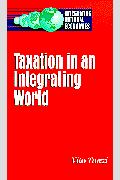What’s the latest thinking in fiscal and monetary policy? The Hutchins Roundup keeps you informed of the latest research, charts, and speeches. Want to receive the Hutchins Roundup as an email? Sign up here to get it in your inbox every Thursday.
Minority loan officers improve minorities’ access to credit
Using administrative data matching loan officers to mortgage applications, W. Scott Frame of the Dallas Fed and co-authors document that minority loan officers are significantly underrepresented in the ranks of loan officers and that this underrepresentation reduces access to credit for minorities. Minority applications handled by minority loan officers are 2.5 percentage points more likely to result in originations than minority applications handled by white loan officers, halving the discrepancy in origination rates between minority and white applications, they find. Minority loans handled by minority officers also default at lower rates than minority loans handled by white officers. The authors suggest that minority loan officers are better able to assess the creditworthiness of minority borrowers and help them draft compelling applications.
Switching from a gas tax to a tax on miles driven would benefit low-income and rural drivers
Using survey data on household travel and motor vehicle use over the 2016-2017 period, Gilbert Metcalf of Tufts University finds that levying taxes on the miles traveled by vehicles rather than their fuel consumption would be mildly progressive. Specifically, the author finds that high-income households are more likely to own electric and newer cars which tend to be more fuel efficient. As such, policies that lower fuel taxes and offset them with taxes on vehicle miles traveled would benefit lower-income households. Rural drivers, despite driving longer distances than urban counterparts, also experience a net benefit from the switch, the author estimates, since they tend to drive fuel-intensive vehicles. While replacing the tax on fuel consumption with taxes on miles traveled would dampen incentives to buy environmentally-conscious fuel-efficient vehicles, it could directly address driving externalities like congestion and motor accidents. “The progressive nature of the tax swap should be heartening to proponents of this tax reform,” the author concludes.
Early childhood education subsidies improve access to licensed care facilities and raise quality of care
Jonathan Borowsky of the University of Minnesota and co-authors estimate the effects of an early childhood education subsidy for families earning up to 250% of the national median income, similar to that included in the House-passed version of the Build Back Better Act. Under this policy, the median expenses of households in the bottom income quintile would fall from 11.9% of income to 5.6% of income, they find. Mothers with children ages 0 to 4 would see a 9.7 percentage point increase in full-time employment. The authors also predict a shift away from informal care provided by family, friends, and neighbors, with a 7.6 percentage point increase in the use of home-based provider services and an 18.3 percentage point increase in the use of center-based services. This shift is also predicted to increase early childhood education teacher wages by 14% for those without a bachelor’s degree and 29% for those with a bachelor’s degree. Although this policy is predicted to increase the costs of early childhood education, the trade-off may be worthwhile given the benefits to families and children, the authors conclude.
Chart of the Week: Consumer Inflation Expectations Rising

Quote of the week:
“Coming out of our last meeting in May, there was a broad sense on the [Federal Open Market] Committee that a one-half percentage point increase in the target range should be considered at this meeting if economic and financial conditions evolved in line with expectations. We also stated that we were highly attentive to inflation risks and that we would be nimble in responding to incoming data and the evolving outlook. Since then, inflation has again surprised to the upside, some indicators of inflation expectations have risen, and projections for inflation this year have been revised up notably. In response to these developments, the Committee decided that a larger increase in the target range was warranted at today’s meeting,” says Federal Reserve Chair Jerome Powell.
“Over coming months, we will be looking for compelling evidence that inflation is moving down, consistent with inflation returning to 2%. We anticipate that ongoing rate increases will be appropriate; the pace of those changes will continue to depend on the incoming data and the evolving outlook for the economy. Clearly, today’s 75 basis point increase is an unusually large one, and I do not expect moves of this size to be common. From the perspective of today, either a 50 or 75 basis point increase seems most likely at our next meeting. We will, however, make our decisions meeting by meeting, and we will continue to communicate our thinking as clearly as we can. Our overarching focus is using our tools to bring inflation back down to our 2% goal and to keep longer-term inflation expectations well anchored.”
The Brookings Institution is financed through the support of a diverse array of foundations, corporations, governments, individuals, as well as an endowment. A list of donors can be found in our annual reports published online here. The findings, interpretations, and conclusions in this report are solely those of its author(s) and are not influenced by any donation.
The Brookings Institution is committed to quality, independence, and impact.
We are supported by a diverse array of funders. In line with our values and policies, each Brookings publication represents the sole views of its author(s).











Commentary
Hutchins Roundup: Minority loan officers, gas taxes, and more
June 16, 2022